“I usually have eureka moments in odd places,” says Indian professional photographer Harshith Dambekodi about when inspiration strikes him. He makes sure to sets aside time to pursue personal projects while juggling a handful of commercial work. This helps expand his creative skills and imaginative freedom in many ways.
We hate banner ads too. Download our app for iOS, iPad, and Android and get no banner ads for $24.99/year.
When I first saw the Looking Glass projects of Dambekodi, I felt like they were intended to mimic a feeling of voyeurism. Almost like someone was using a long lens to peer intimately into the unassuming lives of neighbors across the street. I asked him about his thoughts on this and he summed it up with an amusing anecdote of an experience he had many years ago.
The Essential Gear Used by Harshith Dambekodi
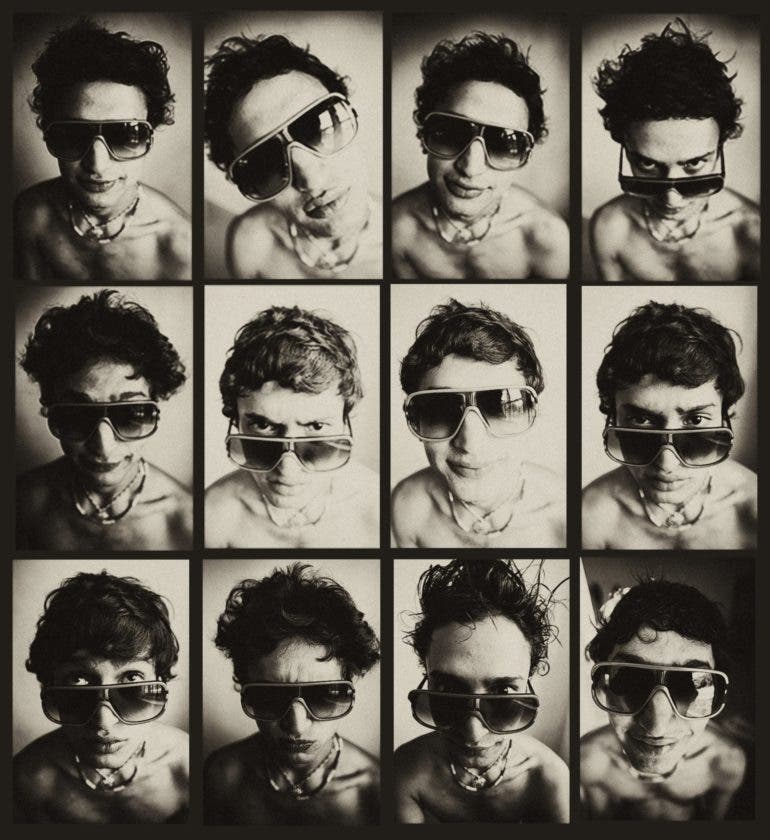
Harshith told us:
(service photographie aérienne): Hi Harshith. Tell us about your journey to photography and how you discovered it.
Harshith Dambekodi: As a kid, I stumbled upon my Dad’s Canon AE-1 35mm film camera with a 50mm lens and the photographs he had documented during his time spent in the States. The idea of capturing moments in a camera seemed mesmerizing. This got me subconsciously hooked on this beautiful medium. Moving forward, I got into a fine art collage ( Karnataka Chitra Kala Parishad ) in Bangalore, India. Here I had my first hand in dark-room technique exposures. Since painting was my main medium of expression, photography was just a hobby. I experimented with painting a lot, but photography gave me a sense of myself and the life I wanted to lead.
In the coming years, I worked as an art director in an advertising agency called Ogilvy & Mather from 2006 to 2008, and then the great recession hit. I was sacked (reason – my boss comes up to me and says, since I have a coffee plantation and I’m financially sound compared to my colleagues, please make the sacrifice needed). This opened up a whole new window to look into other career options, and thus I took up photography as mainstream, and the rest is history. But now if I get to meet him, I will definitely give him a big hug.
The one person who truly guided me to in-depth photography is my mentor Mr. Farrokh Chothia, one of the greatest photographers I have ever known.
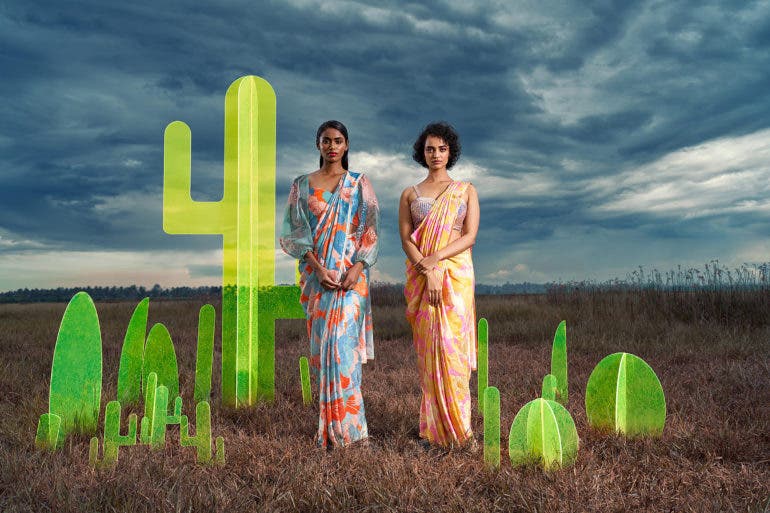
(service photographie aérienne): What camera gear do you use for your work?
Harshith Dambekodi: I currently use a Sony AR7 IV ( 61 MP mirrorless camera ) with G-Master lenses like 85mm f1.4 – mainly for advertising projects, 35mm f1.4 for fashion and editorial, and a 24 -70 f2.8 lens for particular projects like stop-motion and product photography. So my focal length “G-spot” is between 24mm – 85mm. Anything above is cliche out-of-focus imagery of zoom lenses. This gear I have is a workhorse.
Nowadays clients want more number changes with its new-age speedy technology, it helps me achieve deadlines given to me. The previous camera I had was Leica SL with 24-90mm f2.8 and 50mm f1.4; I must say it was a true beauty with the best glass I have ever used. Unfortunately, Leica did not have Capture-One support back then. It was an expensive camera for my personal use, so I had to let it go. I guess now Leica and Capture One have teamed up. Speaking of which, Capture One is my go-to digital capture software for tethering. Prior to all these cameras, I started off my commercial photography career with Canon 5D Mark II & III – those were the best days.
On photography lighting systems, I mainly use Broncolor lighting systems for commercial assignments, both indoor and outdoor. Just love the crisp quality of light it produces and its consistency with color temperature; also they have the best modifiers. The lighting gear I use is mainly rentals. The thing is agencies and clients like to see their products shot in such big lighting systems and want their money well spent. I personally own a Godox lighting system like 1200-ADpro, 600-ADpro & V1 flashes. Mainly use them for my personal photoshoots like fine art nudes, portraitures, and collaborations. Honestly, expensive lighting gear is not the reason to achieve the best image quality. For example, this commercial photoshoot series was shot with just two Godox V1s flash units.
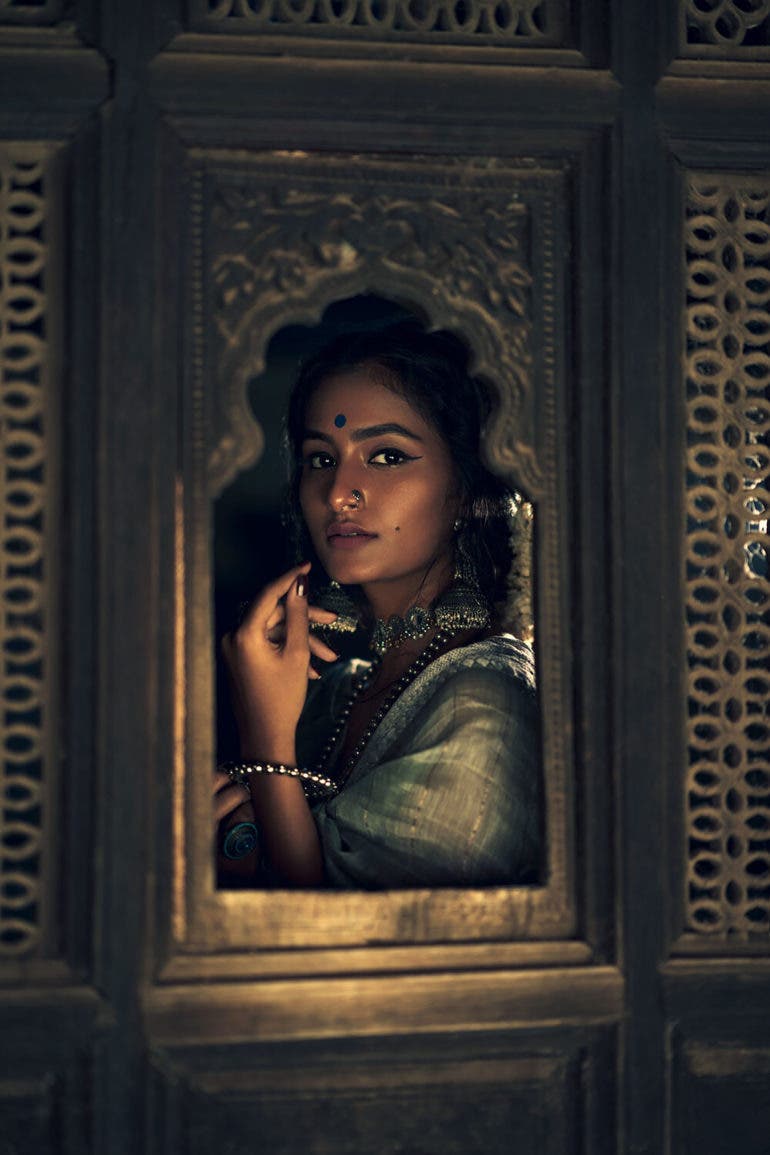
In regard to creative vision with camera and lighting equipment, I strongly believe these are just tools or mediums to achieve your creative vision. It’s all potential as an artist. The camera should not be telling us what to do or a light meter to give us the exact metering. I basically do not follow any thumb rules given to me; I just go with my gut feeling and imagery that is aesthetically right for my eyes.

(service photographie aérienne): You have a couple of projects that focus on mirrors and glass. Is there a personal connection to these topics?
Harshith Dambekodi: I was always fascinated with mirrors and glasses, it depicts vulnerability or resembles a sense of privacy in which I like to capture one’s true self, and also it creates a lovely mood in my artwork.
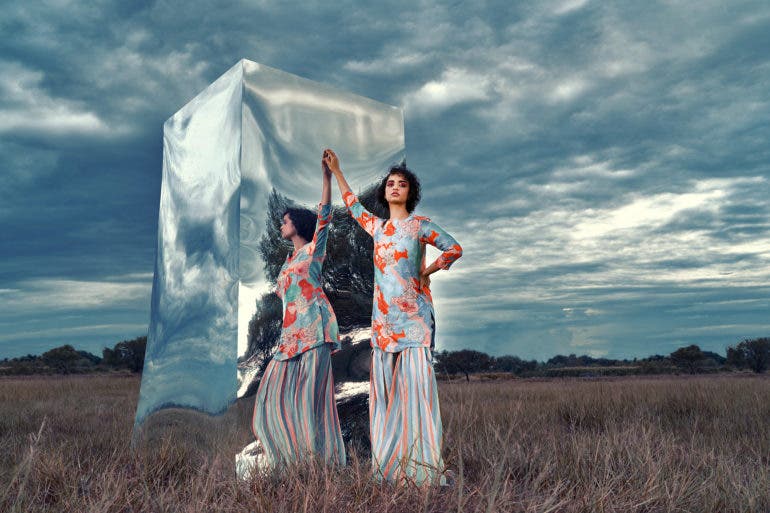
(service photographie aérienne): Looking Glass (and Through The Looking Glass) offer an almost voyeuristic look at a subject on the other side of your lens. What gave you the idea to create these series?
Harshith Dambekodi: Capturing someone behind the frosted glass, to me is like a gateway to your imagination. I would say seeing something at the same time you do not know what is it exactly you are looking at. It is something very surreal for me. I will definitely be exploring more in this series to get it right.

(service photographie aérienne): The subjects in Looking Glass don’t make eye contact, while in Through The Looking Glass, they do. Was this deliberate? If so, what other characteristics set these two series apart?
Harshith Dambekodi: If you notice in the Looking Glass series models are nude or semi-nude, so women automatically tend to show demure characteristics, and in Through the Looking Glass, the model is fully-clothed, so women tend to give more confident characteristics. Choosing the right kind of imagery was deliberate.

(service photographie aérienne): What were the ideas in your mind as you shot both series? What emotions did you want the models to portray?
Harshith Dambekodi: I find all my shooting quite challenging and stressful and tend to overthink a lot. In this particular shoot, I was visualizing the glass props falling on the models’ legs and kept yelling at my assistants while shooting to be very attentive. Luckily these shoots were smooth sailing. I informed the models to be interactive with the glass in front of them and capture the natural self than being posey.

(service photographie aérienne): Tell us the significance of the fogged-up glass. Was this intentionally done to add a particular mood to the images?
Harshith Dambekodi: Yes, the fogged up and frosty glasses give a very painting-like look and also feel surreal if you take it to another level, which I want to experiment with more.
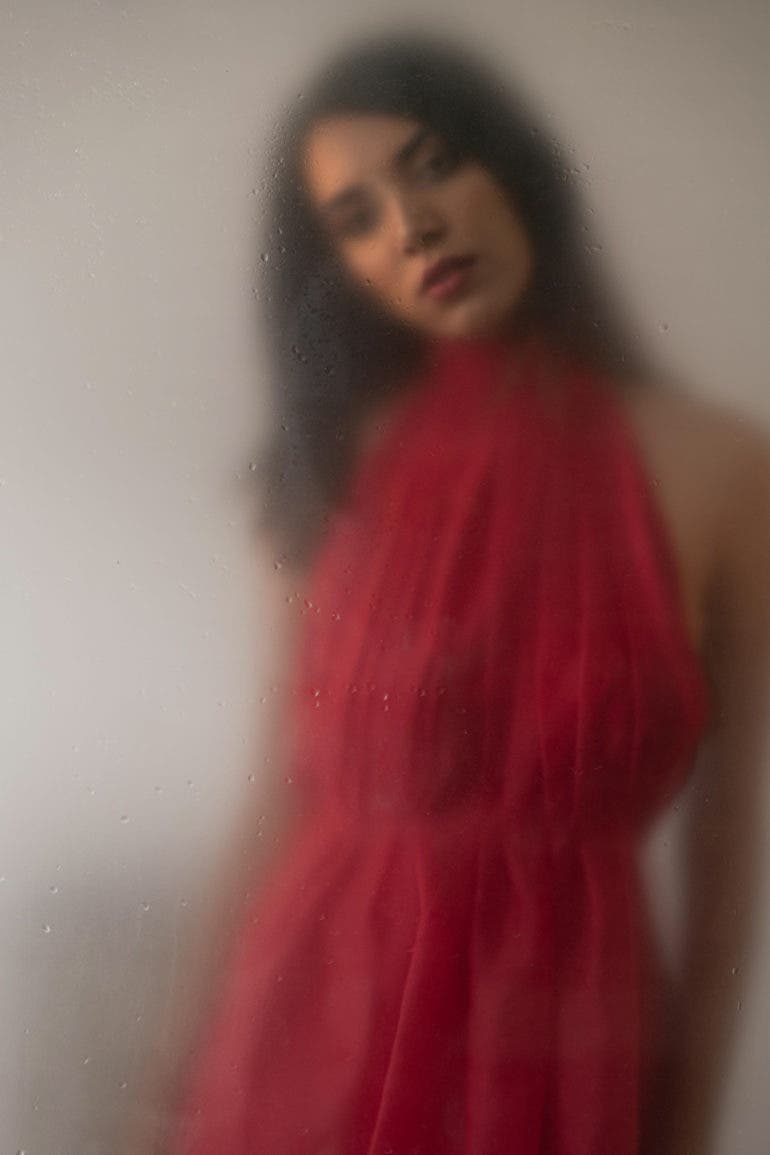
(service photographie aérienne): Any off-camera lights used for these shots? How did you tackle the typical issues arising with flash and reflective glass?
Harshith Dambekodi: Yes, I used off-camera flashes – two Broncolor Siros L heads. It’s mainly side light; a direct flash would have created a reflection on the glasses. A couple of flexes were used as a front light bounce for the fill.

(service photographie aérienne): I’ve read of photographers being called out as creeps and perverts for photographing strangers through windows. What are your thoughts on this?
Harshith Dambekodi: Difficult question. Definitely a no-no for shooting someone next to a window or a personal space without their consent. Every photographer will go through some time in their life of humiliation by invading someone’s personal space.
It’s better not to repeat your mistakes. For instance, back in 2012, I wanted to document Kamathipura – a redlight area in Mumbai, India. I walked in thinking I would walk out with award-winning photographs but ended up getting abused, yelled at and bottles thrown at me. So from an artistic viewpoint, sometimes what looks good to a photographer might affect public morality.
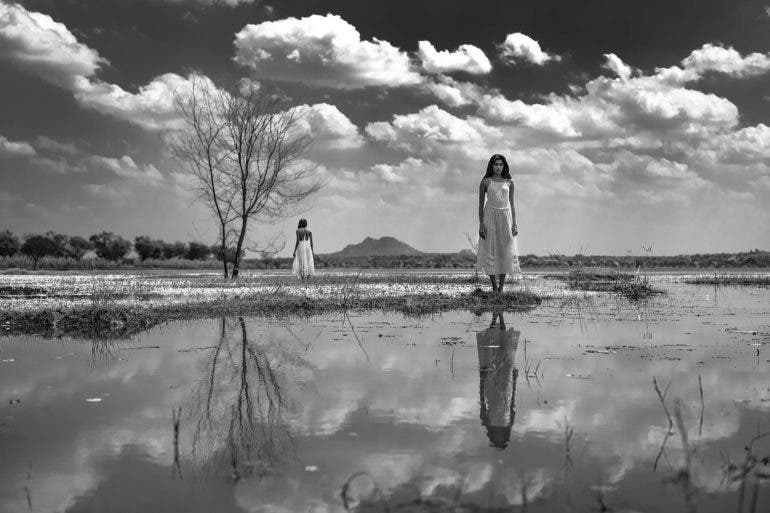
(service photographie aérienne): Mirroir is visibly quite contrasting to these two projects: well lit, shot wider, and with a lot of production done to the set. But what’s that huge air vent above the models? It’s almost like a portal to another dimension.
Harshith Dambekodi: “It’s almost like a portal to another dimension” – bang on, I’m glad that you got it right. I aspired to do something different for Indian wear clothing. Usually, they are shot in temples or colonial structures.
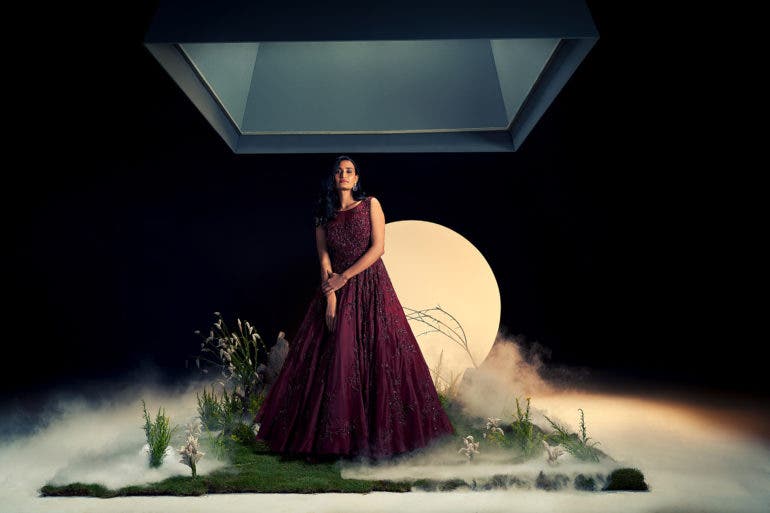
I wanted it to be more futuristic. So I am super happy to get it right.

(service photographie aérienne): As a commercial photographer with a busy lifestyle, ideas for personal projects must be coming at you from everywhere. How do you narrow down which to shoot, and how much do they evolve in terms of concept by the time you shoot them?
Harshith Dambekodi: Too many commercial shoots make you off-kilter, which leads me to do personal shoots with total creative freedom. For my ideas, I usually have eureka moments in odd places. I always type them down on my phone and use them when I get the right team to execute, all based on visceral feelings.
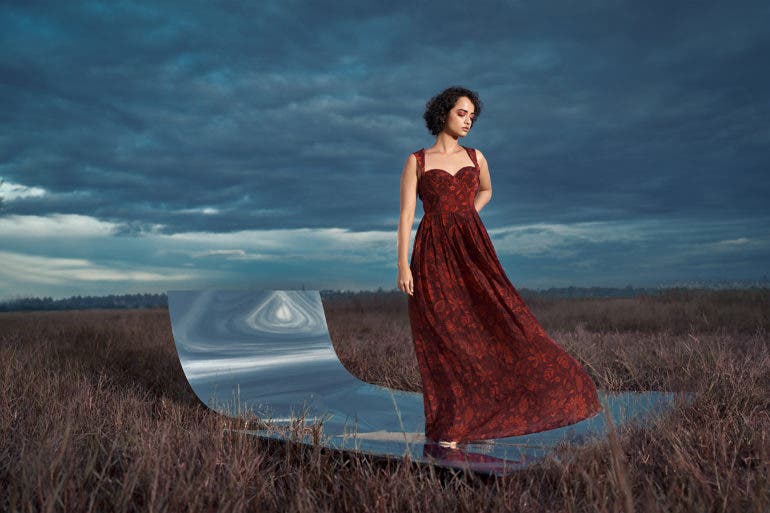
All images by Harshith Dambekodi. Used with permission. Check out his website, his Behance, and Instagram pages to see more of his work.
